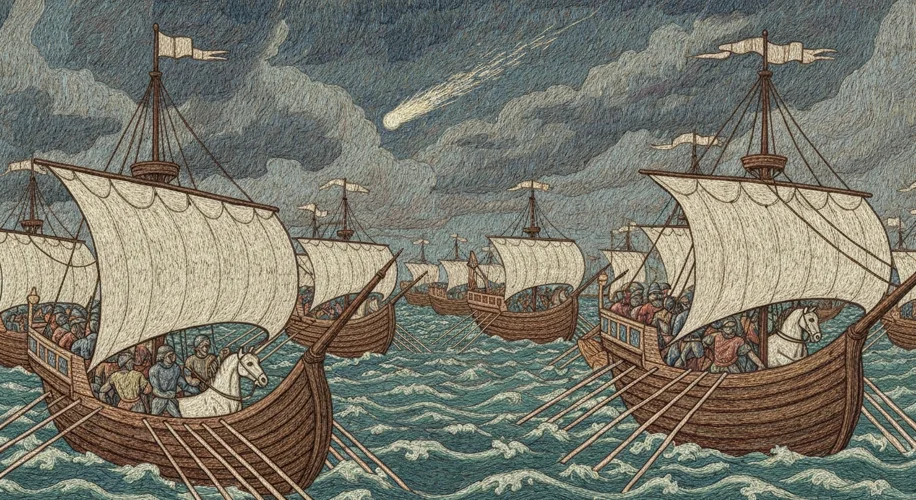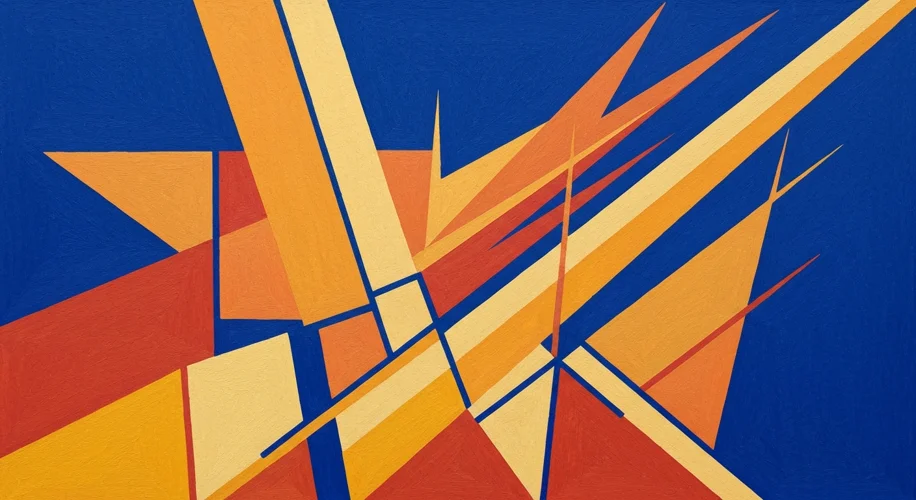Imagine a grand hall, the air thick with anticipation. Torches flicker, casting long shadows on the stone walls. Then, the unveiling: a breathtaking cloth, nearly 70 meters long, unfurled before your eyes. It’s not just fabric; it’s a story, a vibrant, detailed chronicle of a world on the cusp of seismic change. This is the Bayeux Tapestry, an 11th-century embroidered masterpiece that offers us an unparalleled window into the Norman Conquest of England.
But what is this colossal embroidery, and why does it continue to captivate us over nine centuries later? Its story begins not with battles, but with purpose. Commissioned likely by Odo, Bishop of Bayeux and half-brother to William the Conqueror, the tapestry was intended to commemorate and legitimize William’s victory at the Battle of Hastings in 1066. It’s a visual propaganda piece, a medieval social media post, if you will, designed to tell a very specific version of events.
The narrative unfolds with a remarkable sense of urgency and detail. We see Halley’s Comet blazing across the sky – a celestial omen, perhaps, or simply a historical marker of the times. Then, the focus shifts to England, where we witness Harold Godwinson, Earl of Wessex, on his fateful journey. The tapestry depicts him swearing an oath to William, a pivotal moment that would later be used as justification for the invasion. The tension builds as we see ships being built, horses being loaded, and the Norman fleet setting sail across the choppy English Channel.

The climax, of course, is the Battle of Hastings. The embroidery teems with life: soldiers clashing with swords and axes, arrows raining down, horses falling. We see the iconic, albeit gruesome, depiction of Harold’s demise, with an arrow reportedly piercing his eye – a detail that has become synonymous with the tapestry itself. The artists didn’t shy away from the brutality of war; the scene is chaotic, visceral, and undeniably powerful.
What makes the Bayeux Tapestry so extraordinary is its narrative technique. It’s a cinematic scroll, presenting a sequence of events with captions, or tituli, in Latin. It moves with a deliberate pace, focusing on key moments and characters. We get glimpses into the daily lives of Normans and Anglo-Saxons – their feasts, their hunts, their clothing, and their architecture. It’s a remarkably humanizing element in a story of conquest.
Consider the subtle details: the meticulous rendering of armor, the expressions on the faces of both victors and vanquished, the sheer scale of the enterprise. It’s estimated that hundreds of embroiderers, likely women, worked on this colossal undertaking over several years. Their skill is evident in every stitch, transforming linen into a vibrant historical document.

The tapestry’s journey through history is as dramatic as its subject matter. It survived centuries, even being used as a tablecloth by Napoleon’s troops at one point! Today, it resides in the Musée de la Tapisserie de Bayeux in Normandy, France, a testament to its enduring significance. It’s more than just an artifact; it’s a survivor, a storyteller, and a vital piece of our shared past.
Why should an ordinary person care about an 11th-century embroidery? Because the Bayeux Tapestry is a bridge across time. It allows us to witness history not as dry facts in a book, but as a living, breathing narrative. It reminds us that behind every major historical event are real people, with their own ambitions, fears, and fates. It’s a powerful reminder of how art can preserve history, shape our understanding of the past, and continue to resonate with audiences centuries later.


